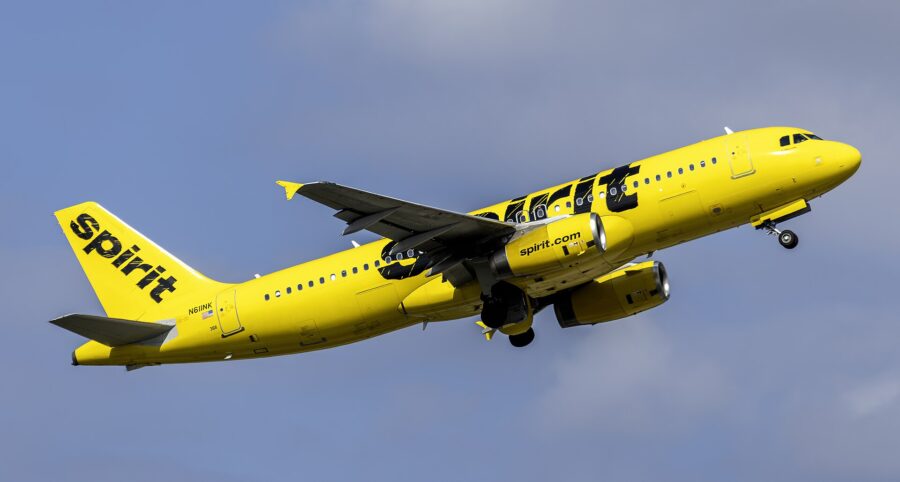Analysts Doubt Spirit Airlines’ Future as Merger Talks Continue

Analysts are questioning whether any airline or investor should acquire Spirit Airlines—or simply wait for the carrier to liquidate and purchase its assets, aircraft, and routes at a lower cost. Spirit’s high debt, operational struggles, and deteriorating consumer reputation pose significant risks for potential buyers.
Spirit Airlines pioneered the ultra-low-cost carrier (ULCC) model in the U.S., offering travelers rock-bottom fares by unbundling nearly every aspect of air travel—from seat selection to carry-on bags and onboard snacks—closely mirroring Ryanair’s business model in Europe. The strategy made Spirit a price leader among budget-conscious travelers but also drew criticism for its rigid policies, limited legroom, and numerous add-on fees.
Over time, however, major U.S. airlines such as Delta Air Lines, United Airlines, and American Airlines adopted similar tactics by introducing Basic Economy fares that mirrored Spirit’s no-frills approach while maintaining their superior brand perception. These Basic Economy products allowed full-service carriers to match Spirit’s pricing on key domestic and leisure routes without diluting their core premium offerings. As a result, Spirit’s once-unique cost advantage eroded, leaving the airline squeezed between ultra-low-cost rivals like Frontier and well-established majors that could offer comparable fares with greater reliability, loyalty benefits, and overall customer trust.
According to Ahmed Abdelghany, associate dean and professor at Embry-Riddle Aeronautical University, the ultra-low-cost carrier (ULCC) business model is losing traction in the U.S. as travelers increasingly value comfort and reliability over rock-bottom fares. “Many people have experienced ultra-low-cost carrier service and know what it means versus the full-service carrier,” Abdelghany explained. “That shift is benefiting major airlines like Delta and United and driving the premiumization of cabins across the industry.”
Spirit Airlines recently confirmed that it is in active merger and acquisition discussions while outlining a restructuring strategy aimed at recovery and repositioning following its second Chapter 11 bankruptcy filing in less than a year. The Florida-based ULCC told investors it is “actively engaged in discussions with a number of interested counterparties,” suggesting a potential merger or acquisition could be its most viable path forward.
In plain terms, Spirit is seeking a lifeline through consolidation after years of financial strain. The carrier has struggled to outpace rising costs and has seen revenue stagnate since the COVID-19 pandemic, resulting in ongoing losses. Wall Street analysts believe that Frontier Airlines and JetBlue Airways would gain the most if Spirit disappears from the market, while Southwest Airlines and other major carriers would also benefit from reduced competition and access to valuable routes.
Spirit’s investor filing with the U.S. Securities and Exchange Commission (SEC) on October 14 outlines three key pillars of its postbankruptcy plan should it remain independent:
- Fleet and Capacity Reduction: Spirit plans to reduce its network size by roughly 20% by 2026—on top of the 24% seat reduction already projected for 2025. The carrier will also simplify its fleet to only include Airbus A320 and A321 aircraft, retiring newer A320neo and A321neo models affected by ongoing Pratt & Whitney engine issues. More than 100 of Spirit’s 214 aircraft could be returned to lessors as part of the restructuring.
- Gradual Growth Strategy: After downsizing, Spirit aims to return to “modest growth” by 2027 and target a long-term annual growth rate of around 9%.
- Brand Repositioning: Spirit plans to shed its “no-frills” image and shift toward a value-based airline model, targeting budget-conscious travelers seeking affordable but upgraded service. This includes enhancements to its “Big Front Seat” and extra-legroom sections to appeal to passengers drawn to comfort and flexibility over ultra-cheap fares.
Spirit’s transformation faces an uphill battle. The airline is cutting jobs, furloughing pilots and flight attendants, and eliminating more than a dozen unprofitable routes in an effort to regain financial stability. Whether through a merger, acquisition, or a leaner independent structure, Spirit’s survival will depend on its ability to redefine value in a market that’s rapidly turning its back on bare-bones travel.
Related News: https://airguide.info/?s=Spirit+Airlines, https://airguide.info/category/air-travel-business/airline-finance/
Sources: AirGuide Business airguide.info, bing.com, reuters.com, yahoo.com, thepointsguy.com
